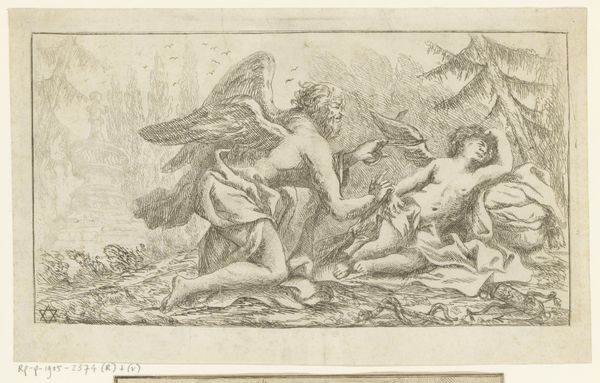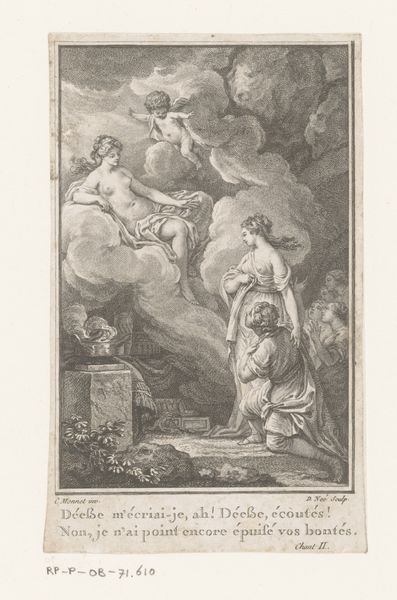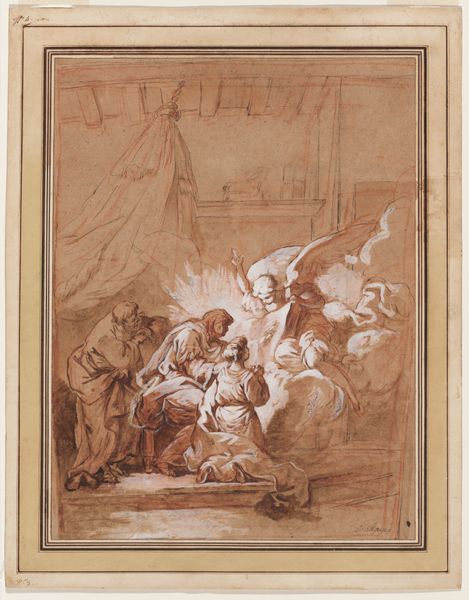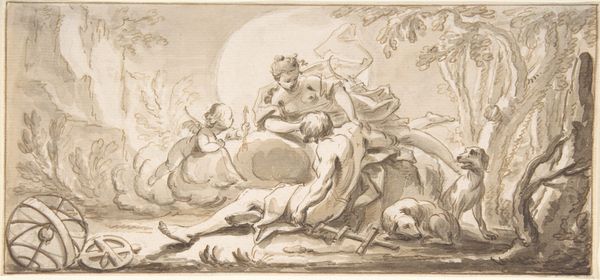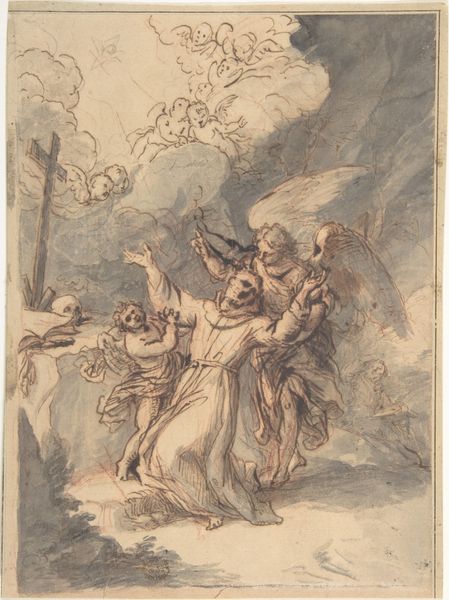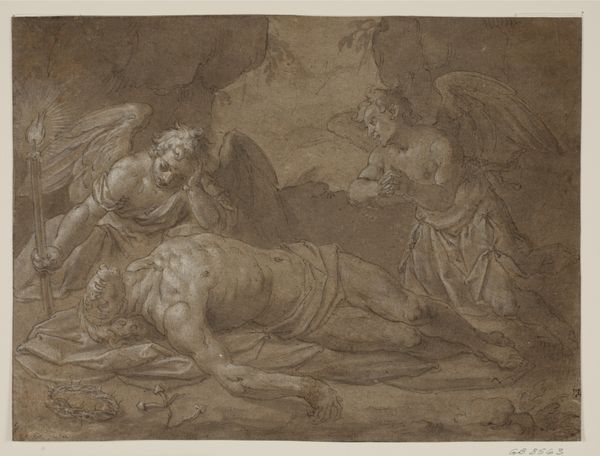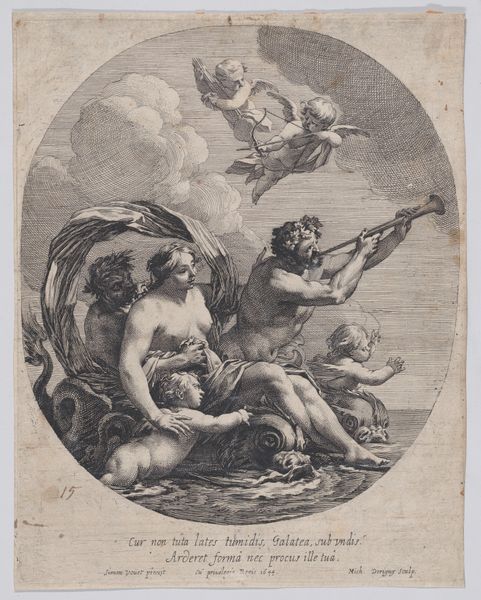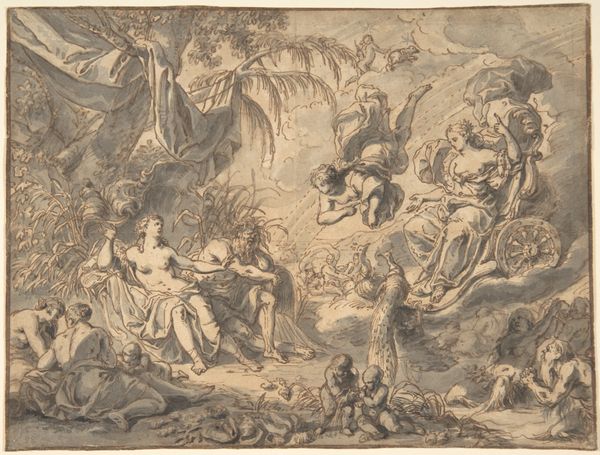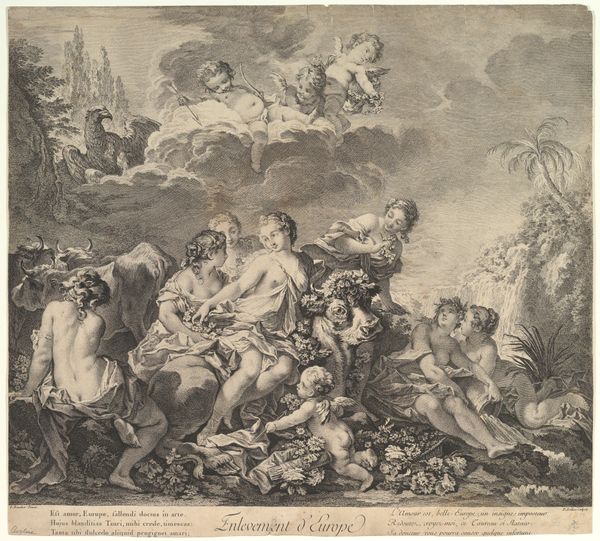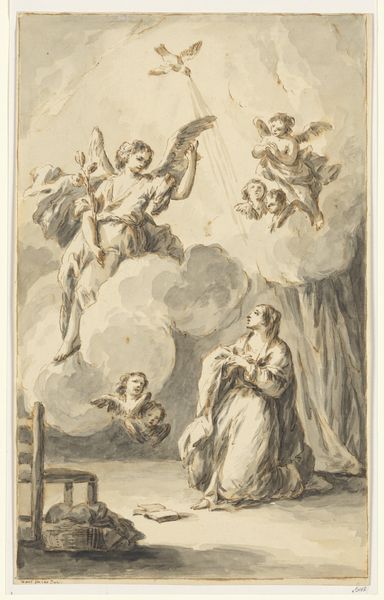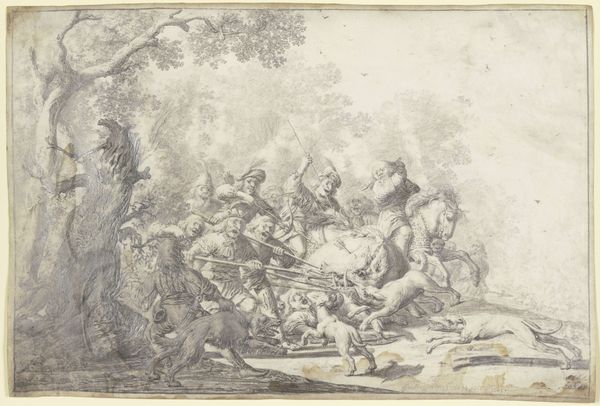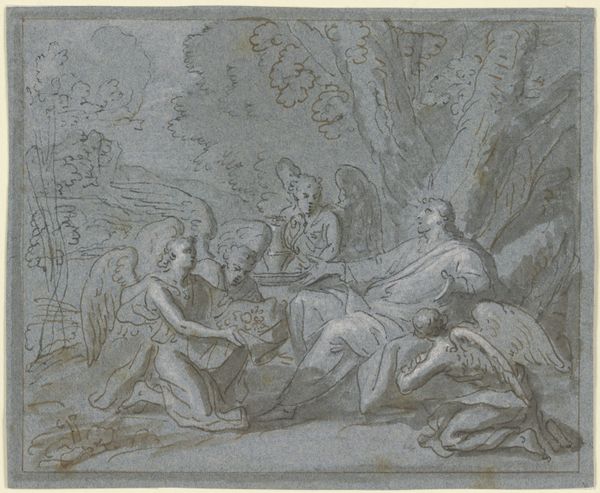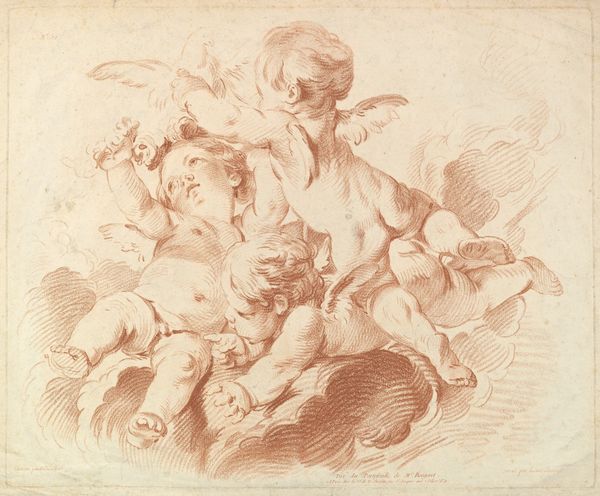
Fragments choisis dans les Peintures et les Tableaux les plus interessants des Palais et des Eglises d'Italie 1740 - 1791
0:00
0:00
Dimensions: sheet: 6 7/16 x 8 3/16 in. (16.3 x 20.8 cm) image: 5 1/4 x 7 7/16 in. (13.3 x 18.9 cm)
Copyright: Public Domain
Curator: What a fascinating image! Before us is a print from Jean Claude Richard, Abbé de Saint-Non’s, "Fragments choisis dans les Peintures et les Tableaux les plus intéressants des Palais et des Églises d'Italie," a collection spanning 1740 to 1791. It resides here, at the Metropolitan Museum. Editor: It feels like a dream. Or maybe a very staged tableau vivant? A reclining figure, quite classical, gazing upwards as angels, cupids rather, attend to her. What does it evoke for you? Curator: Initially, I’m drawn to the interplay of sacred and profane love. This era saw such an integration, sometimes uneasy. Here, cherubic figures almost serenade the reclining woman. Perhaps representing earthly ideals merging with divine aspirations. Editor: Absolutely. The allegory is blatant but appealing. I am intrigued by the idea of access Richard and Saint-Non are attempting; they sought to give access to great works via these 'fragments'. Were they simply widening cultural participation, or perhaps appropriating power by curating it? Curator: An excellent point. By selecting these fragments, Saint-Non was certainly constructing a narrative, shaping taste and, potentially, controlling access to Italian masterpieces. We can read this as a form of cultural colonialism through printmaking. The medium shapes the message as well as distribution. Editor: And what a message it is. This hazy brown drawing makes it hard to define which is the actual subject of worship: is it divinity or the reclinant muse herself? Curator: And Baroque artists were masterful at employing these visual ambiguities. These drawings operate as potent visual reminders of societal beliefs regarding spirituality and also artistic inspiration during that era. But by removing the artwork to an engraved edition available outside of churches and Palazzi we should ask ourselves; who could this idealized version of Italy really speak to? Editor: It all circles back to accessibility, doesn't it? Both of the art itself, and of the ideas within it. These prints open doorways, but carefully guarded doorways nevertheless. Curator: Yes, that controlled access defines much of the art world, then and now. A beautiful fragment, and so rich with implications. Editor: A dream worth dissecting, it seems! A beautiful object which seems to become more complicated upon each observation.
Comments
No comments
Be the first to comment and join the conversation on the ultimate creative platform.
